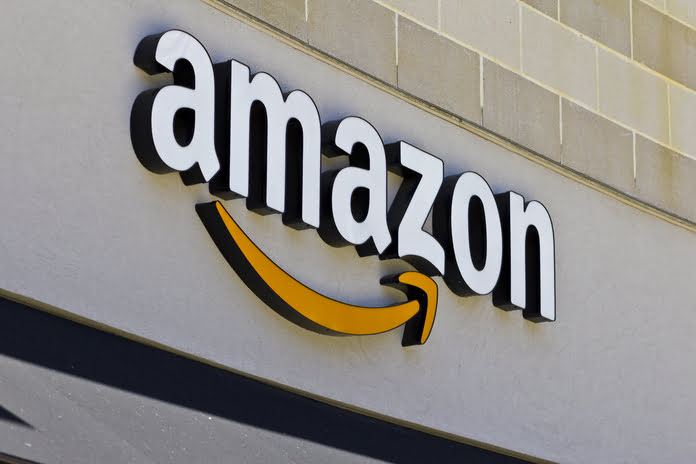Google Stock (NASDAQ:GOOG)
Google (NASDAQ:GOOG) reported profits for the first quarter of 2023 on April 25th. I believe that following its earnings announcement, we saw that Search was looking resilient, Google Cloud adoption increased despite continuous growth deceleration, and profitability improved.
This article investigates if Google stock is a buy after its first-quarter earnings and whether there is a current purchasing opportunity for investors.
Did Google Outperform on Earnings?
Google reported 1Q23 profit results that were above expectations, primarily due to higher-than-expected Search revenue and EPS, demonstrating the benefits of efficiency improvements.
Google earned $69.8 billion in revenue in the first quarter of 2023, 1% more than expected and expanding at a 6% year-on-year rate ignoring the effects of foreign exchange.
The results for Search, YouTube, and Cloud were 2%, 1%, and 2% higher than expected.
Revenue in EMEA increased by 3% year on year ex-FX, while revenue in APAC increased by 1% year on year ex-FX.
Total operating income of $17.4 billion, implying a 25.0% margin, was 6% higher than expected, and GAAP EPS of $1.17 was $0.06 higher than expected, however, GAAP EPS includes a $0.06 benefit from the extension of server and equipment useful life.
The results of Google Search and YouTube indicate that advertising patterns are stable.
Revenue from Search and Other was up 2% to $40.4 billion in 1Q23. This was 2% higher than expected. YouTube advertising income fell 3% year on year to $6.7 billion, yet it was still 1% higher than expected.
Overall, Google Services’ gross income was higher than expected.
More importantly, gross margins expanded, resulting in Google Services GAAP Operating Income which was 7% higher than expected.
The Search results, in my opinion, indicate core resiliency.
While growth was only 2% year on year and in the mid-single digits ex-FX, I was blown away by the strength of the Travel and Retail verticals, which were among Google’s strongest. This comes as Performance Max adoption grows following its expansion to the Travel sector in March, with an 18% increase in average conversion from the 13% announced 14 months ago as a result of advancements in the underlying AI.
Softness in Financials and Media & Entertainment offset this.
What is the future of Search and YouTube?
I anticipate that search and YouTube growth will accelerate during 2023.
In particular, YouTube Shorts and Subscriptions are gaining traction in the third quarter.
Shorts content continued to rise in 1Q23, with the number of daily Shorts uploaded increasing by 80% in 2022.
Shorts also accounted for the majority of new channel subscribers, as they help to engage users more effectively. As of the fourth quarter of 2022, music subscriptions and YouTube TV had a combined 80 million subscribers.
As a result of these factors, Google Services’ “Other revenue” increased by 9% year on year.
These two sectors should accelerate through 2023 as Search remains resilient and YouTube gains traction as comparisons become easier. The main areas for YouTube in the future will continue to be Shorts, engagement on CTV, subscriptions, and making YouTube more shoppable.
What Are Google Cloud’s Prospects?
Google Cloud revenue increased 28% year on year to $7.4 billion, slowing by 400 basis points as compared to the previous quarter. In the quarter, Google Cloud results were in line with consensus and 2% higher than my own estimates.
This contrasts with Amazon’s (NASDAQ:AMZN) Azure growth of 31% year on year ex-FX in CY1Q23, which is down 700 basis points quarter on quarter. Microsoft also forecasted a further quarter-on-quarter decrease of 400 to 500 basis points to 26% to 27% year-on-year growth ex-FX in the coming quarter.
Google Cloud residual performance obligations (RPOs) were $61.7 billion at the end of 1Q23, with growth slowing to 22% year on year from 26% in 4Q22, and down from $64.3 billion in 4Q22.
This may be seen negatively by investors given that Azure RPOs exit growth rate for the March quarter was 26% year on year, which was consistent with the previous quarter. Furthermore, Microsoft stated that it would begin to lap optimization spending efforts in the June quarter of 2023, implying that the company is beginning to see easier comparisons, indicating that the company may be seeing the light at the end of the tunnel.
Despite this, Google did not issue any forward guidance on the 1Q23 results call, instead stating in the earnings call:
“We continued to experience slower consumption growth in Q1 as customers trimmed GCP costs in response to the uncertain macro backdrop.”
Google Cloud’s operational profit was $191 million, representing a 2.6% margin below the consensus of negative $513 million. As a result, this quarter represents a watershed moment for Google Cloud as it transitions into a successful business.
Google Cloud adoption continues to grow, with 60% of the Fortune 1000 using GCP and deal volume increasing 500% in the last three years, with larger agreements worth more than $250 million increasing more than 300%.
Furthermore, I believe that the 400 basis point deceleration in 1Q23 cloud growth rate is an improvement over the 600 basis point deceleration in 4Q22. This could imply that the optimizations have stabilized in the face of continued demand.
AI generation
While there was little discussion about Google’s generative AI initiatives, management did state that the company will integrate LLM experiences more natively into Search. In addition, management mentioned generative AI product advancements in advertising.
Google Cloud’s enterprise offerings include generative AI product developments for advertising. From an enterprise standpoint, Google Cloud’s PaLM API and MakerSuite may aid in the creation of GenAI apps.
Finally, Google uses generative AI to detect cyber threats and automate security operations.
As a result, I anticipate slight year-on-year growth in capital expenditures in 2023, compared to the prior estimate of unchanged capital expenditures in 2023. This is due to management emphasizing the need to dramatically increase technical infrastructure, which is likely tied to its expenditures in generative AI.
What to Expect from Google’s Next Earnings
To begin, I like that Google’s earnings were better than predicted, implying that the corporation may outperform on modest expectations. The search proved to be robust, and the growing Google Cloud adoption is something to keep an eye on. While we may still see near-term spend optimization, I believe the long-term picture for Google Cloud remains clear.
Second, Google’s financial health continues to improve, notably in terms of profitability. Cost efficiencies are improving, and there is still space for improvement in the coming quarters. The slower growth in operating expenses of 8.5% in 1Q23 compared to the 10% growth in operating expenses in 4Q22 makes me more optimistic about Google’s sustained increasing profitability. I predict operational expenses to grow at a slower rate than revenue growth because Google has reduced employment significantly and improved spending efficiency, and AI automation tools are assisting in developing cost savings.
Aside from the improved fundamentals, I like that the company announced an additional $70 billion in stock repurchases following the recent earnings results. Based on Alphabet stock’s current market capitalization of $1.3 billion, the $70 billion in stock repurchases represent 5% of the company’s total current market capitalization.
Risks
Falling Behind in the Fight for Generative AI
As evidenced by the decline in Google’s valuation, the market is growing increasingly skeptical about Google’s capacity to stay ahead in generative products and integration. Competition is increasing on all fronts, as competitors such as Microsoft seek to be a credible competitive threat, causing Google’s competitive moat to shrink.
Legislative and Regulatory Risks
As a result of current and potential future antitrust and DOJ investigations, there are also increased regulatory and legislative risks. The European Commission is imposing new limitations on Google, which may have an influence on its future results. Google is one of the companies that must comply with the European Union’s Digital Services Act. The Act compels Google to conduct regular platform assessments to analyze the risks that its platforms may pose to individuals and civic ideals such as free expression. The European Commission noted that Google’s YouTube, Google Maps, Google Play, and Google Shopping, as well as Google Search, are subject to this legislation.
Is Google a Smart Investment Right Now?
Google stock is now trading at 17 times the projected earnings in 2024.
Despite the ongoing macroeconomic challenges, I believe we will see improved visibility on both revenue and earnings in the future.
On my estimate of Google’s 2024 EPS, I assume a 20x P/E.
My one-year price target for Google shares is $138, representing a 28% increase from current levels.
Google has traded at an average of 32x P/E during the last five years. My 20x P/E forecast for Google in 2024 is a nearly 40% discount to the company’s 5-year average P/E.
As a result, I believe Google is currently very attractively valued, with a very appealing risk-reward ratio.
My discounted valuation multiple takes into account Google’s tough macroeconomic climate, as well as the slowing growth at Google Cloud and the limited visibility of Bard integration into Search.
With so much reduced, I believe Google stock is a fantastic buy today because the risk-reward ratio is really attractive.
Featured Image: Unsplash @ arkanperdana

















